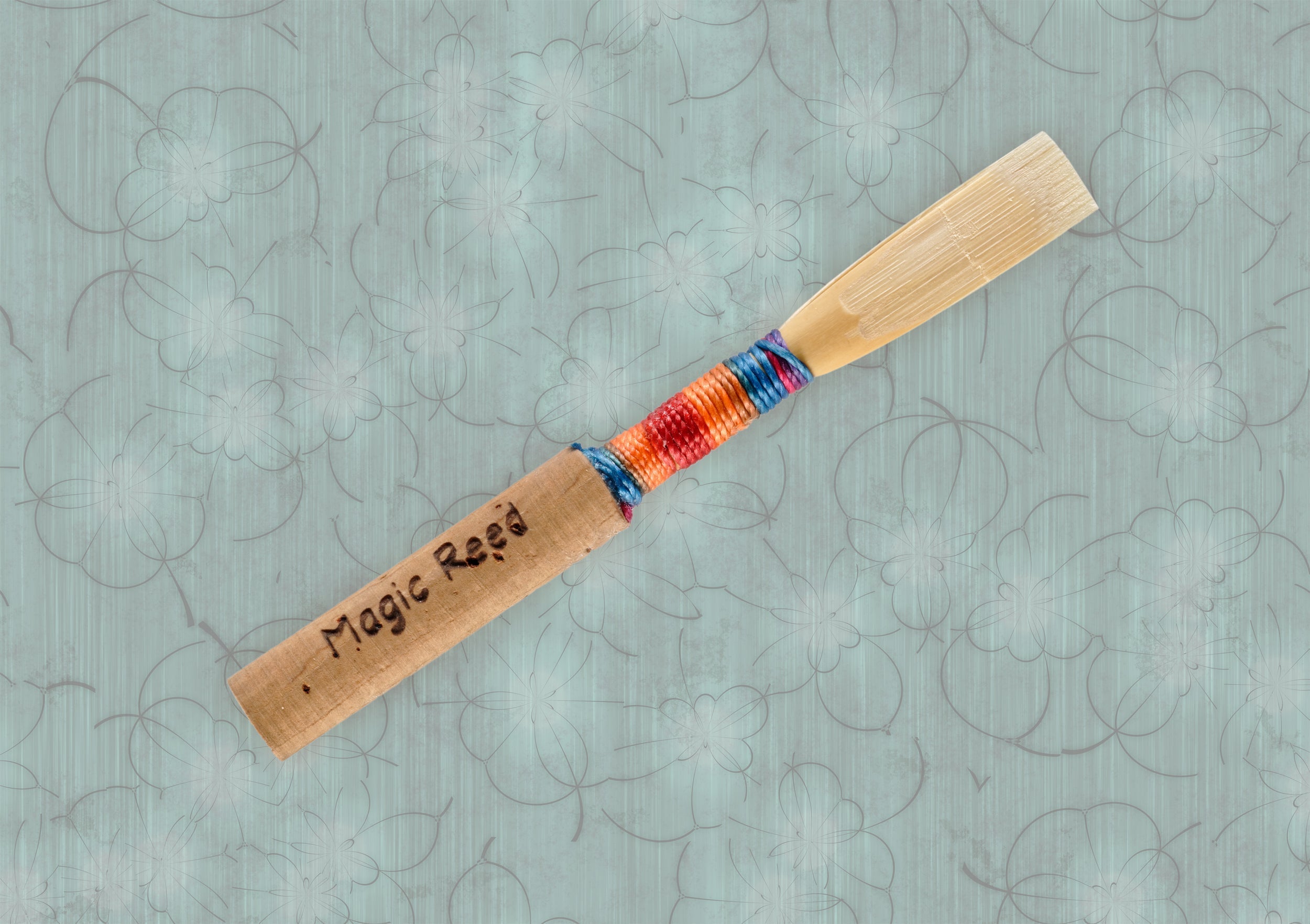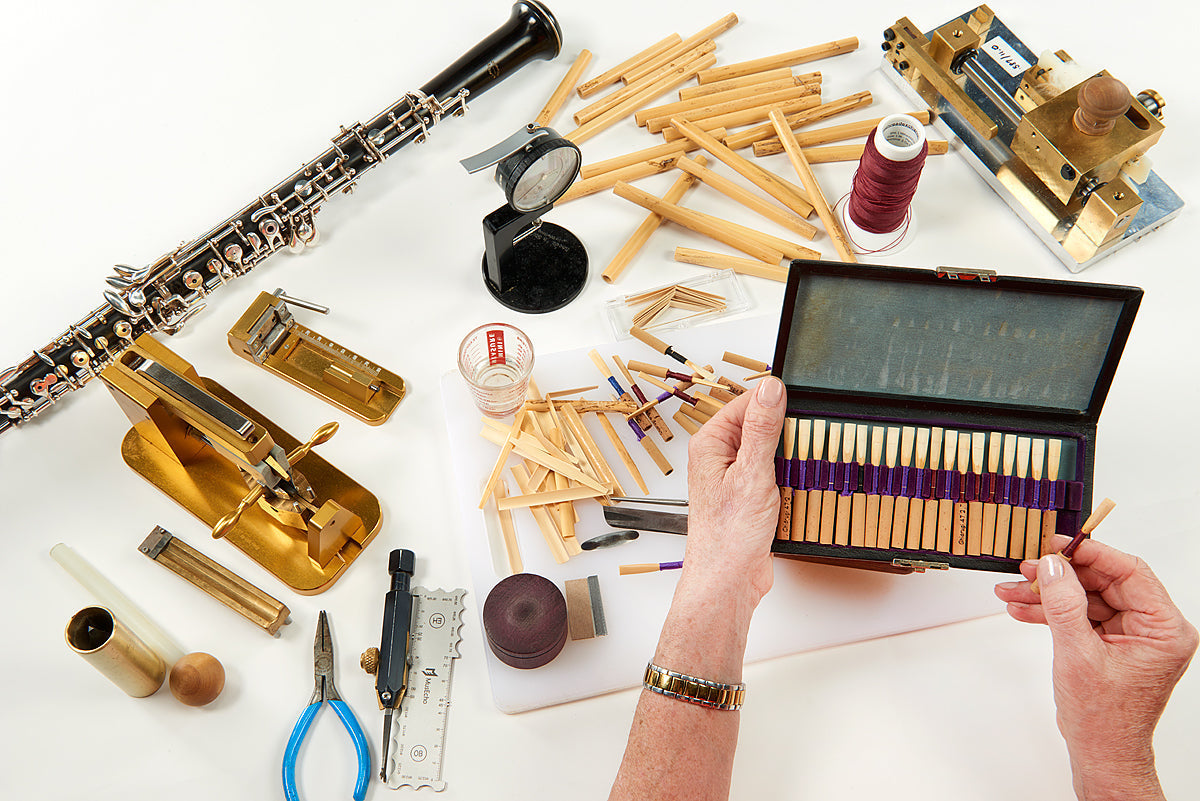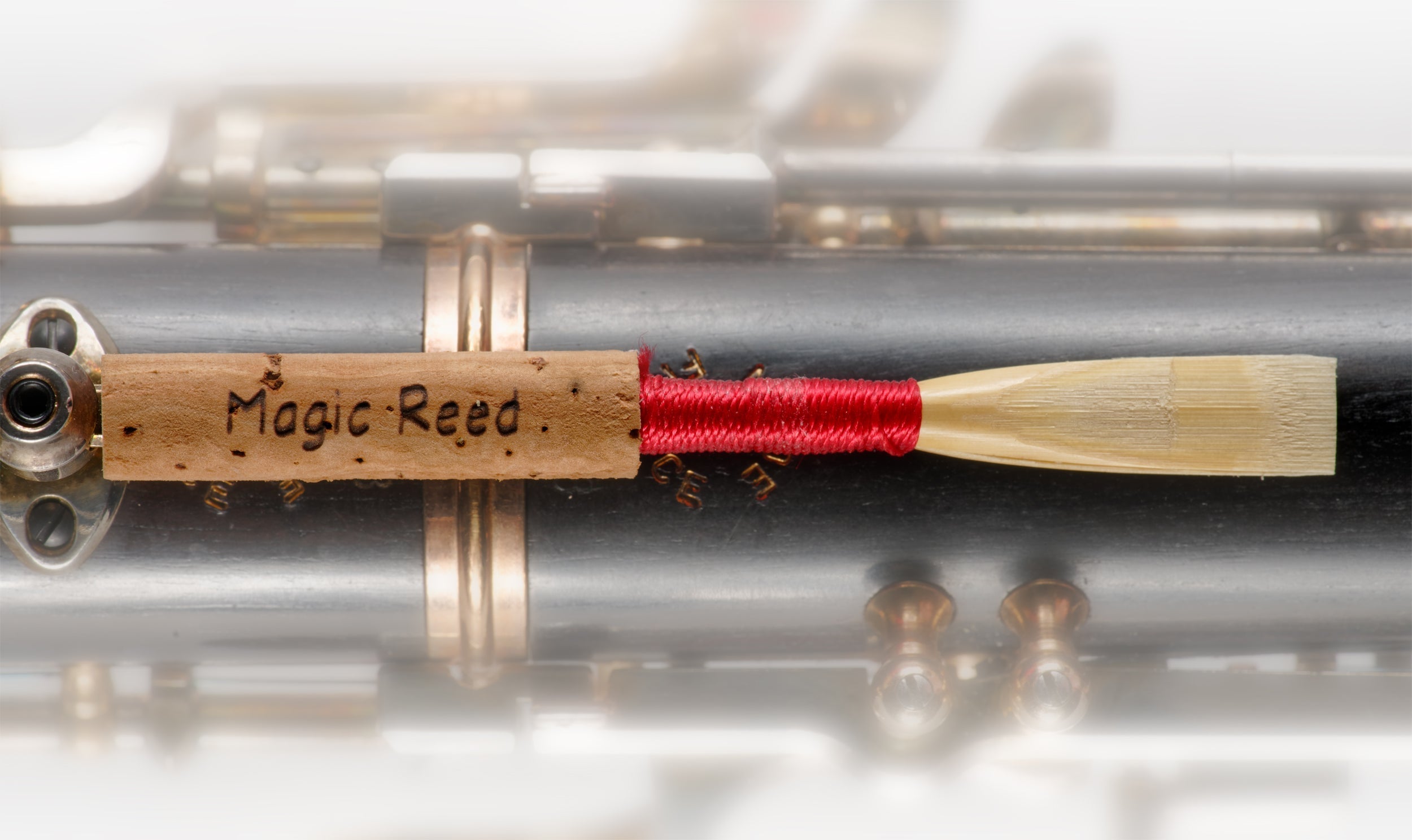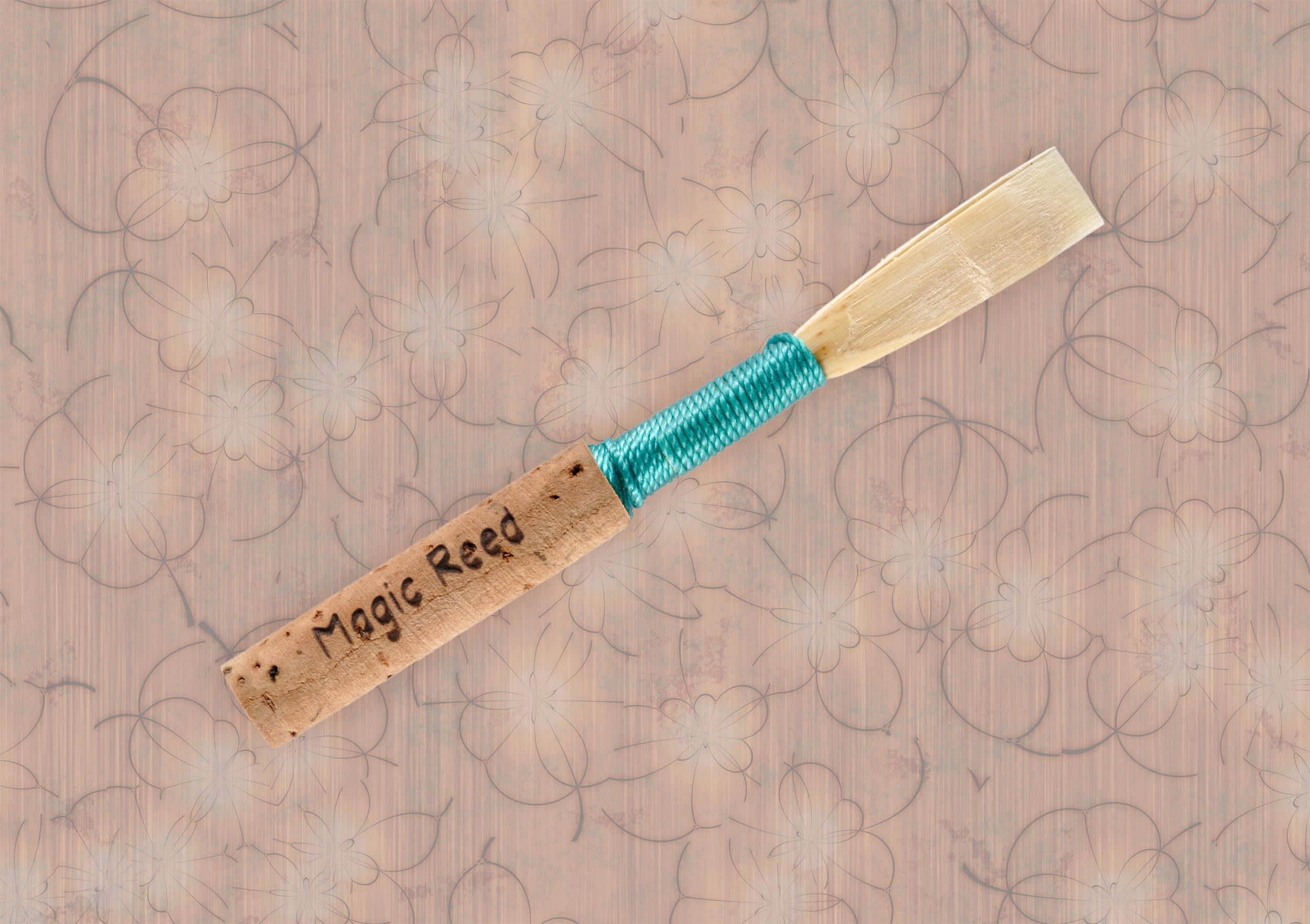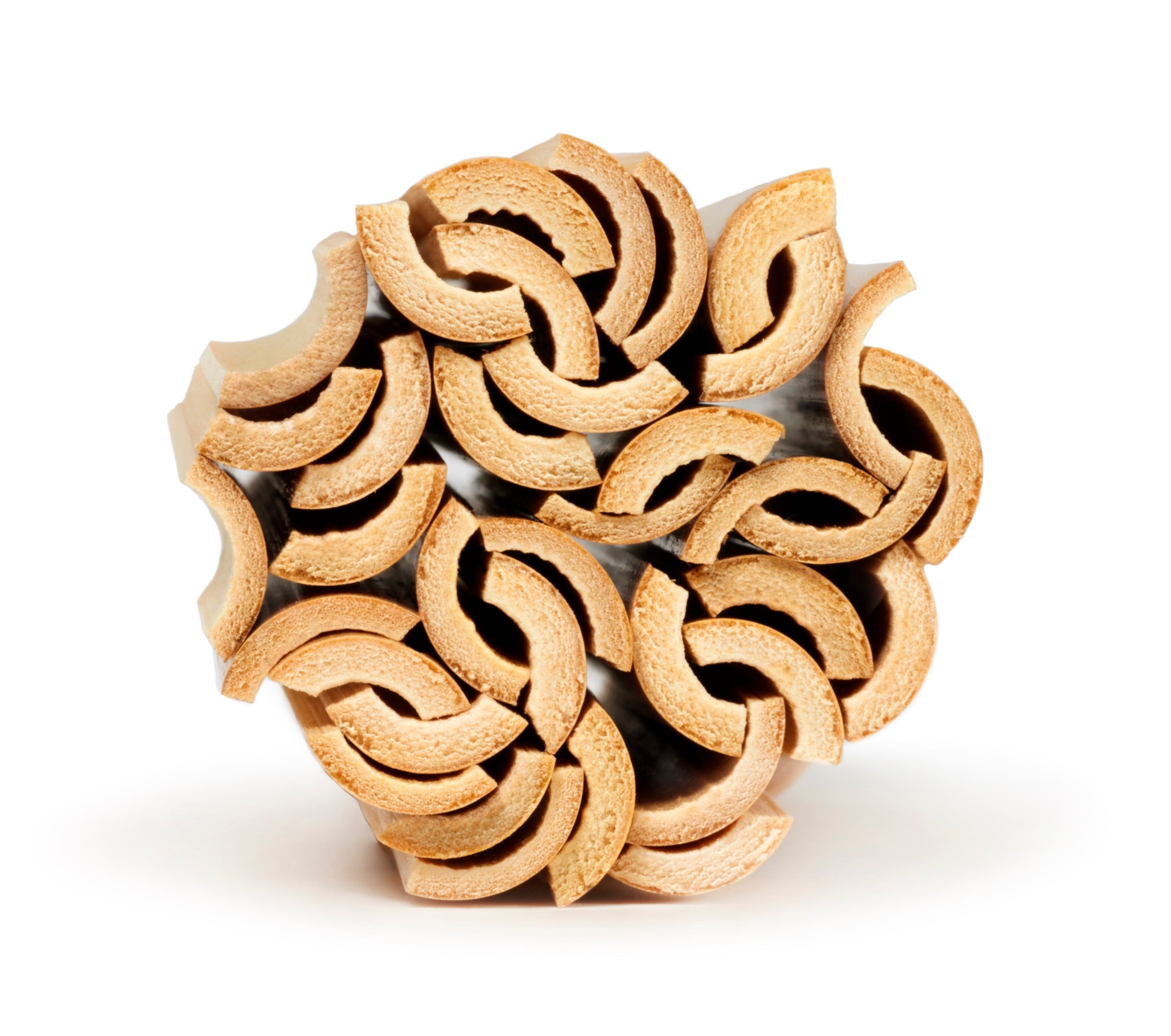
The Hazards Of Working With Twisted Oboe Cane
-

-
 by Kathy Sheinhouse
by Kathy Sheinhouse
Problems In Oboe Reed Making - Twisted Oboe Cane
Working with straight oboe cane is essential to achieve success in reed making. Using twisted cane will imperil most every effort. The reason is that when twisted cane is gouged, the center line of the gouge moves out of it's axis. Anomalies will be found in the gouge down the spine and the sides affecting pitch and stability. The extent of the irregularities corresponds to the degree to which the cane is twisted.
Many reed makers try to identify and remove unusable tube cane by sight. Certainly, cane that doesn't make it through the gouging process is unfit for use and is likely twisted or otherwise imperfect. I have posts on processing tube cane for best outcomes. Some twisted cane may make it through gouging. For those looking for an extra quality check, use a trusted micrometer to weed out what you cannot detect through other means.
Measure your gouged cane with a micrometer down the length of the center (spine) to find irregularities. Sometimes it is because the cane was not centered on the gouging bed.I have found spines with as much as .5mm differences along the length. This cane should be discarded. It is usually because it is twisted. This will help to achieve more consistency in cane and more stability in finished reeds.
This is my take on this cane management topic. I urge you to seek out all perspectives on the topic and experiment within your own set-up to see what strategy works best for you.Now you have one more piece of the puzzle.



